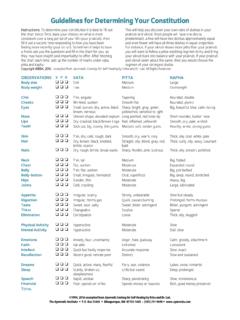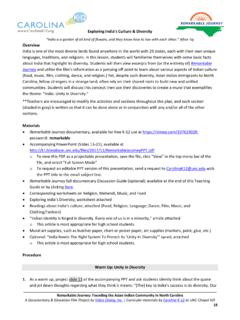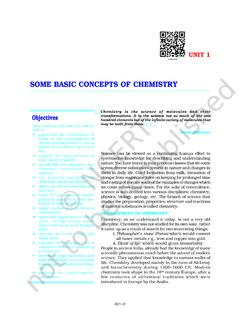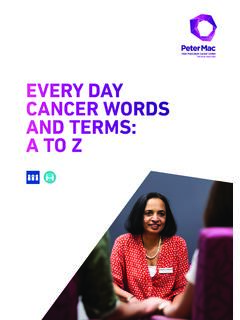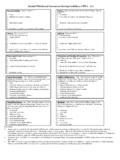Transcription of National Health Statistics Reports - Centers for Disease ...
1 National Health Statistics Reports Number 98 October 12, 2016. Use of Complementary Health Approaches for Musculoskeletal Pain Disorders Among Adults: United States, 2012. by Tainya C. Clarke, , , National Center for Health Statistics ; Richard L. Nahin, , , National Institutes of Health ; Patricia M. Barnes, , National Center for Health Statistics ; and Barbara J. Stussman, National Institutes of Health Abstract Introduction Objective This report examines the use of complementary Health approaches Pain is a leading cause of disability among adults aged 18 and over who had a musculoskeletal pain disorder. and a major contributor to Health care Prevalence of use among this population subgroup is compared with use by persons utilization (1). Pain is often associated without a musculoskeletal disorder.
2 Use for any reason, as well as specifically to treat with a wide range of injury and Disease . musculoskeletal pain disorders, is examined. It is also costly to the United States, not Methods Using the 2012 National Health Interview Survey, estimates of the just in terms of Health care expenses use of complementary Health approaches for any reason, as well as use to treat and disability compensation, but musculoskeletal pain disorders, are presented. Statistical tests were performed to also with respect to lost productivity assess the significance of differences between groups of complementary Health and employment, reduced incomes, approaches used among persons with specific musculoskeletal pain disorders. lost school days, and decreased Musculoskeletal pain disorders included lower back pain, sciatica, neck pain, joint quality of life (2).
3 The focus of this pain or related conditions, arthritic conditions, and other musculoskeletal pain report is on somatic pain affecting disorders not included in any of the previous categories. Respondents could report the body's musculoskeletal tissues having more than one disorder. (musculoskeletal pain disorders) and the Results In 2012, of adults had a musculoskeletal pain disorder. use of different types of complementary The use of any complementary Health approach for any reason among persons with Health approaches by persons who are a musculoskeletal pain disorder ( ) was significantly higher than use among affected. In order to better understand persons without a musculoskeletal pain disorder ( ). Among adults with any differences in use among this population musculoskeletal pain disorder, the use of natural products for any reason ( ) was subgroup, this report compares the use significantly higher than the use of mind and body approaches ( ), practitioner- of complementary Health approaches based approaches ( ), or whole medical system approaches ( ).
4 The pattern among those with a musculoskeletal of use of the above-mentioned groups of complementary Health approaches was disorder with use among those without a similar for persons without a musculoskeletal disorder. However, prevalence of musculoskeletal disorder. use among these persons was significantly lower compared with persons with a Musculoskeletal pain disorders musculoskeletal disorder. include a wide range of acute and chronic For treatment, the use of practitioner-based approaches among persons with any injuries or inflammatory conditions musculoskeletal pain disorder ( ) was more than three times as high as the use of that cause pain in the body's joints;. any other group of approaches ( ). The patterns of use of specific groups of ligaments; muscles; nerves; tendons;. complementary Health approaches also differed among specific musculoskeletal pain and structures that support the limbs, disorders.
5 Neck, and back (3). These disorders can impair daily functioning and are some of Keywords: arthritis back pain sciatica National Health Interview Survey DEPARTMENT OF Health AND HUMAN SERVICES. Centers for Disease Control and Prevention National Center for Health Statistics Page 2 National Health Statistics Reports Number 98 October 12, 2016. the leading causes of physical disability for treatment of their musculoskeletal previously described (19). The study in the United States (4). Conventional pain disorders. Comparisons are sample included 19,236 adults who medical treatment for chronic also made for persons with specific reported having one or more individual musculoskeletal pain ( , nonsteroidal musculoskeletal pain disorders. musculoskeletal pain disorders in the past anti-inflammatory drugs and surgery) 3 months.
6 Respondents were asked not and use of opioids often lack long-term to report aches and pains that are fleeting benefit or subject patients to other risks Methods or minor. Only persons with pain that (5 7). Consequently, some persons with lasted a whole day or more were included these conditions may seek alternative Data source in these analyses. Questions about the treatment options. Alternative Health individual musculoskeletal pain disorders care interventions ( , chiropractic and Data from the 2012 NHIS were discussed in this report are located in the osteopathic medicine), products ( , used for this analysis. NHIS is a Definition of terms section at the end of herbs and natural products), or practices nationally representative, cross-sectional this report. ( , massage therapy and yoga) not household interview survey that is generally considered part of conventional fielded continuously by the National medicine may collectively be referred to Center for Health Statistics and produces Complementary Health as complementary Health approaches.
7 Annual estimates of the Health of the civilian noninstitutionalized Approaches There is increasing clinical trial evidence for the efficacy of some population. Interviews are conducted in Survey respondents were asked complementary Health approaches in respondents' homes, but follow-ups to about their use of up to 23 named treating specific musculoskeletal pain complete interviews may be conducted approaches in the past 12 months. Use disorders (7). However, there have been over the telephone. A detailed description of complementary Health approaches for inconsistencies in the experimental of the 2012 NHIS sample design and any reason was determined by a positive designs and diagnostic criteria used the survey questionnaire is available response to having used or having seen a in patient selection for many of these elsewhere (18).
8 The Household and practitioner for a complementary Health clinical trials (7,8). As a result, there is Family Core of NHIS collect Health and approach during the past 12 months, some discord among the clinical research sociodemographic information on each regardless of reason for use. For the three community regarding the efficacy of member of all families residing within a most frequently used approaches for each some of these approaches for various sampled household. Within each family, individual, persons were then asked if, musculoskeletal pain disorders (5,7 10). additional information is collected from during the past 12 months, they used the Despite this, examining which groups one randomly selected adult (the sample specific named approach for one or more of approaches are being used by persons adult ) aged 18 and over through the specific Health problems, symptoms, or with individual musculoskeletal pain Sample Adult Core.
9 The most recent conditions. Those who responded yes disorders may better inform physician- Adult Alternative Medicine (ALT) were asked for what Health problems, patient dialogue and priority-setting supplement was administered to sample symptoms, or conditions did you see a efforts for clinical researchers. adult respondents in 2012. The ALT practitioner or use the specific named Data from population-based supplement, sponsored by the National approach. There was no predetermined surveys on the use of complementary Institutes of Health 's National Center for list of conditions for this question, so Health approaches in the United States Complementary and Integrative Health interviewers recorded the conditions now span 20 years (11 13). The 2002 (NCCIH), was implemented in order as reported by respondents.
10 This report National Health Interview Survey to provide a National data source on only includes responses to whether the (NHIS) provided the first nationally complementary medicine use. three most frequently named approaches representative estimates of adult use Information on the use of were used for treatment of individual of complementary Health approaches complementary Health approaches in musculoskeletal pain disorders. Use for based on data collected from in-person the past 12 months was collected from treatment of nonmusculoskeletal pain interviews (14). Since then data on the a sample of 34,525 adults aged 18 disorders was not analyzed separately. use of complementary Health approaches and over who participated in the ALT Use of complementary Health approaches in the general population, collected supplement, while the information on for any reason includes use for treatment periodically by NHIS, have been used musculoskeletal pain disorders was of a musculoskeletal pain disorder.










